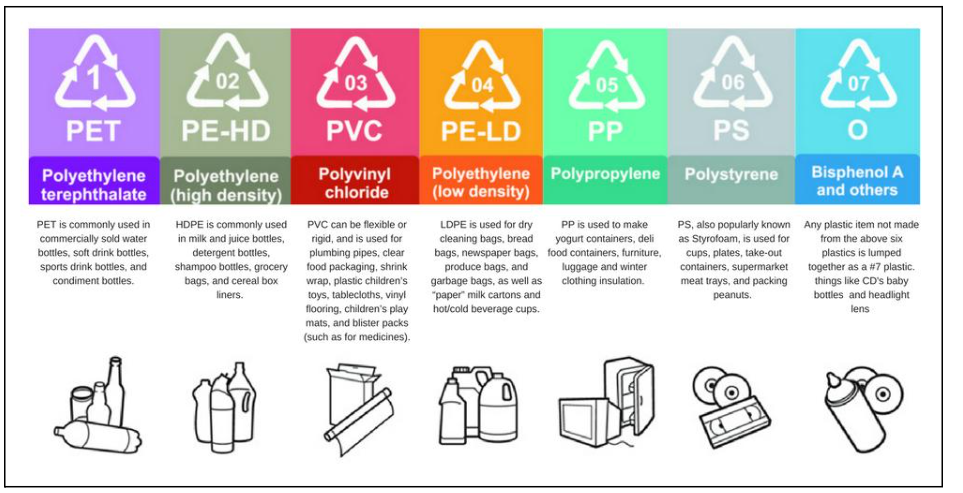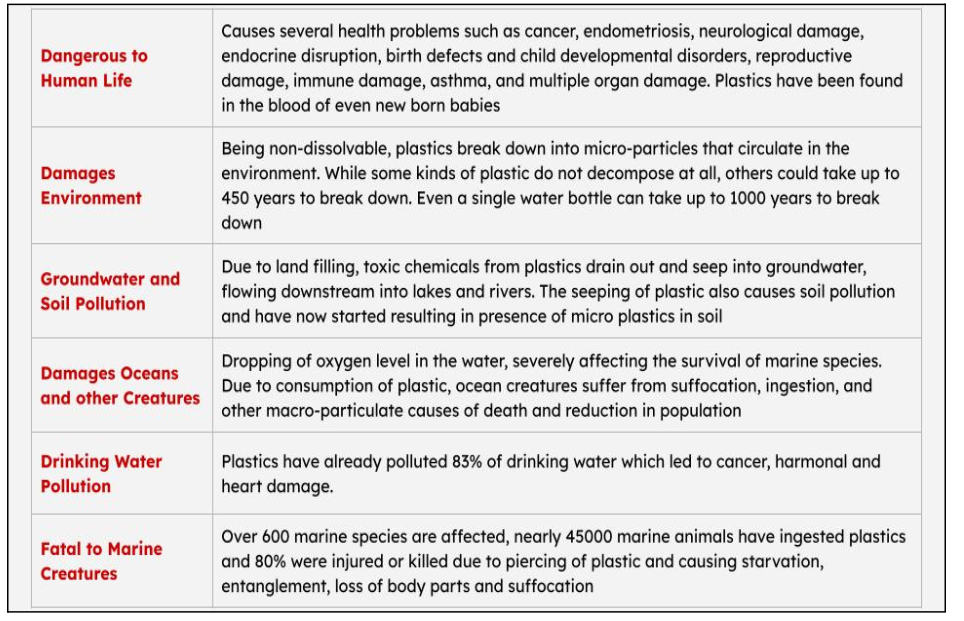Multiple reports of the Central Pollution Control Board note that the data related to plastic waste generation in India is inadequate, and incomplete. Many local bodies are not recording and reporting plastic waste generation data as required by the rules.
Plastic is found in almost everything that people use in their day-to-day lives, leaving almost practically nothing that is devoid of plastic material in the modern world. Owing to its cheaper cost, easy availability and other reasons, the world has seen a significant rise in the volume of plastic production, especially in the last two decades. According to the 2019 report published by the Union Ministry of Housing and Urban Affairs (MoHUA), Global Plastic Production is over 150 Million Tons every year, with average Per Capita Consumption being 28 kilograms or 76 grams per day. This is higher than the annual average per capita consumption of protein, which is 68 grams per day. In other words, these statistics show the alarming level of plastic usage globally.
On the flip side, the production and usage of plastic also cause several million tons of plastic waste. This waste is globally well known to cause widespread and debilitating impacts on the environment, humans, animals, birds, and other species. This consequential pollution is one of the major and important environmental issues affecting almost every single person in the contemporary world, causing various types of long-lasting damage.
In this story, we look at the Global and Indian situation of plastic production, consumption, waste generation and the consequential impacts that are experienced.
Methodology
The data has been sourced from Plastic Waste Dataset available on Dataful, which has been compiled from Central Pollution Control Board (CPCB) Annual Reports. The same data is used for analysis in this story.
Plastic Types and Usages
The Plastic Waste (Management) Rules, 2016 (PWM Rules) define ‘Plastic’ as any material that contains high Polymers as an essential ingredient. Accordingly, there are about 7 types of most common plastics that are used, utilized, and consumed in different materials in different ways.

The above list of types of plastics and their diverse usage is not complete, however, the list shows that plastic usage is to be found in materials which are as tiny as pens, tea glasses, toys to bigger materials such as paints, cables, batteries, etc. Therefore, as the MoHUA 2019 report notes, plastic usage has become an integral part of daily life in the modern world. As a result, we see the generation of huge quantities of Plastic Waste across the Globe.
Global Plastic Waste Generation is more than Carrying Capacity of Earth
The MoHUA 2019 report also highlights that globally only about 10% of the plastic waste that is generated is recycled and the rest of the waste is either incinerated, landfilled, or left as waste without any treatment or management. This clearly underlines the piling of plastic waste across the globe. According to the Global Environmental Action (EA) group’s latest 2023 report, the volume of plastic waste being created across the world is so much so that currently the globe is experiencing 157 plastic overshoot days a year, which means that the plastic waste generated in a year is more than carrying capacity of the earth for about 157 days. Thus, it explains the unbelievable levels to which plastic waste generation has grown in the world.
According to the same EA report, plastic production is going to double by 2040 and the consequential plastic waste generation is going to be tripled. Therefore, these facts underline that very shortly, the earth could well reach full 365 plastic overshoot days or even more. Thus, the consequential impacts that are going to be witnessed could well be more than what has already been experienced.
The Menacing Impacts of Plastic are Widely Acknowledged & Witnessed across the Globe
The widespread and far-reaching consequential impacts of plastic waste and its pollution are well-known and have been well-acknowledged over the years. The MoHUA 2019 report underlines the multiple types of damages that are caused as a result of plastic waste generated and the pollution caused by it. The same are summarized below.

The above official data clearly shows the long-lasting, irreversible, and highly damaging impacts of plastic waste.
India records only a partial amount of Plastic Waste Generated
The global data and menacing impact reveal a dreadful scenario of the present state of the contemporary world. The data for India shows that the situation is no different.
It begins with the fundamental problem of not having an efficient enforcement system for mandatorily recording day-to-day plastic waste generated across the country. The PWM rules mandate that every local authority in urban and rural regions must both record plastic waste generated in the respective localities and submit the annual reports to the State Pollution Control Boards (SPBs), which in turn submit the state-level reports to the CPCB.
However, the analysis of data from Dataful shows that several states have not submitted plastic waste generation data from the years 2010-11 to 2017-18. The data further shows that it is only from 2018-19 that most of the states have started submitting the same data. Hence, much of the plastic waste generated in India has not been recorded.
Further, even though the data shows that most of the states have submitted plastic waste generation data from the year 2018-19 to 2020-21, the same data does not reflect the actual plastic waste generated in India. The CPCB itself acknowledges this fact in its annual reports. For example, CPCB’s 2019-20 and 2020-21 annual reports note that the bulk of the local bodies have not recorded and provided data about plastic waste generated in their respective localities. On this note, the 2019-20 report specifically notes that “none of the States/UTs have reported submission of AR (Annual Reports) by all VPs (Village Panchayats).”
It is evident that in India, data on only a partial amount of plastic waste generated is being recorded. The actual waste generation would be much higher than the figures provided in the CPCB data.
The analysis of partial data submitted by states from the year 2018-19 to 2020-21 shows that Plastic Waste Generation is on the rising trend in India. Data shows that plastic waste generation in India has increased from 3.36 to 4.12 million tons per annum, which is an increase of 22.8% in three years.
Reduction of Plastic usage and Efficient Enforcing System is needed in India
The MoHUA 2019 report notes that about 50% of plastic used once is discarded in India. This leads not only to the consequences as fore mentioned but also causes an increase in carbon footprint. The 2018 TERI report notes that about 28.4% of plastic waste generated in India is recycled, leaving the rest to landfilling or open dumping. In addition, the MoHUA 2019 report also notes that “recycling is not a safe and permanent solution for plastic waste disposal”, owing to the environmental consequences it creates. The same report also notes that even the landfilling carries its consequences of soil and groundwater pollution.
It is also a pressing concern that the PWM Rules of 2016 do not contain any comprehensive provisions about checking and systematically curtailing the production of different types of plastics and their usage in different materials so that the generation of plastic waste can be reduced.
These pressing problems in India of plastic waste generation, inadequate recording and collection of the same waste, and the other problems related to disposal call for legislative and executive measures to reduce plastic waste generation and more efficient enforcement mechanisms to systematically collect and dispose plastic waste generated with least consequences on the environment and human health.


